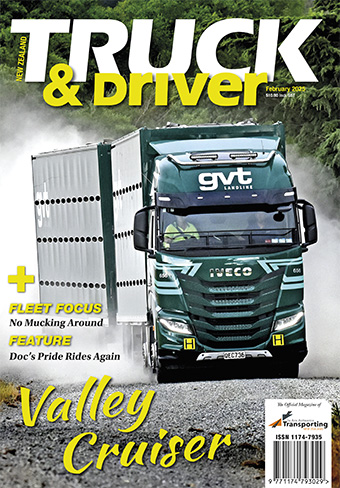Ia Ara Aotearoa Transporting New Zealand News


Sideloader unit standards updated
Last year the New Zealand Intermodal Transport Safety Group (NZITSG) was formed to address the significant safety issues associated with the interface between road transport and the other modes associated with import and export freight.
The NZITSG, with secretarial support from RTF, is tasked with establishing and maintaining best practice safety and compliance standards for road transport operators loading, handling and delivering intermodal freight.
"As announced at the Group's formation, the first major project was to improve the safety of sideloader operations," says NZITSG chair Murray Young.
"A number of companies willingly shared internal procedures and policy to help inform the Group's work in this area and help develop best practice across the industry, which was really pleasing.
"The NZITSG has recently completed the first stage of this project, the review of the unit standard 17679 – Operate a Truck Mounted Sideloader. The key change established by the Group is the splitting of the current unit standard into two separate components, one theory based and the other with a more practical focus."
...Last year the New Zealand Intermodal Transport Safety Group (NZITSG) was formed to address the significant safety issues associated with the interface between road transport and the other modes associated with import and export freight.
The NZITSG, with secretarial support from RTF, is tasked with establishing and maintaining best practice safety and compliance standards for road transport operators loading, handling and delivering intermodal freight.
"As announced at the Group's formation, the first major project was to improve the safety of sideloader operations," says NZITSG chair Murray Young.
"A number of companies willingly shared internal procedures and policy to help inform the Group's work in this area and help develop best practice across the industry, which was really pleasing.
"The NZITSG has recently completed the first stage of this project, the review of the unit standard 17679 – Operate a Truck Mounted Sideloader. The key change established by the Group is the splitting of the current unit standard into two separate components, one theory based and the other with a more practical focus."
People credited with the first unit standard will be able to describe safe sideloader operations, preparations to operate a sideloader and loading, unloading and transferring procedures for a sideloader and container.
The second practical-based unit standard will ensure those who complete it can check a truck-mounted sideloader, ensure site safety, load a container from the ground onto a sideloader vehicle, unload a container from a sideloader vehicle onto the ground, and transfer a container from one vehicle to another.
The current version of Unit Standard 17679 can still be assessed until the last date of assessment, which is December 31, 2021. This will allow operators time to shift from the current version of the unit standard to any new versions listed.
"The NZITSG would also like to introduce recurrent training to ensure worker engagement and everyone operating a sideloader is staying up to date with best practice and maintaining competency," says Young.
"It is proposed that those who hold the current version of the unit standard would receive a refresher to bring them up to the competencies in the new theory and practical standards as soon as possible, with this being completed by the end of 2022.
"Ongoing refresher training would then take place every three years, with both a theory and practical component for all operators.
"The scope of this needs further discussion between industry and those who deliver the training and the NZITSG looks forward to facilitating that."
The Group is also currently working alongside Worksafe NZ, manufacturers and MITO to develop a Sideloader Code of Practice, which will be added as a reference document to these standards once developed.
"The use of the Sideloader Code of Practice will not be mandatory," says Young.
"However, we hope that members of the industry will take advantage of the Group's work, and use our recommendations to enhance their best practice and make sure the operation of sideloaders is as safe as possible."
If operators are interested in becoming a third party provider to deliver training and assessment of the two unit standards, please contact Murray Young at murray@nzexpress.co.nz




 + EQUIPMENT GUIDE - FREE
+ EQUIPMENT GUIDE - FREE
